We provide training in all levels of security . All our instructors have many years practical & operational experience in their given fields and bring this to the training curriculum, giving students “real world” experiences and outcomes.
All courses are accredited by various awarding bodies in the UK and USA, including that of the Security Industry Authority. For corporate entities who wish to train their staff specifically for their requirements, we can tailor specific learning outcomes and training schedules after an initial consultation.
All courses are pass or fail, the student will be constantly assessed during training and every effort will be made by the instructors, to assist the student in achieving the required level of competence, including one on one Instruction if required outside of the main training class.
We are confident that our course syllabuses, which combine comprehensive skill packages, with proven successful instructional technique and the benefit of the instructors many years of practical expertise in the field, will provide you with the finest training foundation available. Course are open to men and women over the age of 18. no prior experience is required.
We have provided recognised training courses for over 10 years on an international level to private individuals, Corporate and government organisations and currently provide the Close protection training course to the Royal Gurkha Rifles. All courses contain the relevant legislation and laws for the country of delivery or operations.
All instructors are fully qualified with extensive security, military and police backgrounds.
New SIA applicants, from 1 April 2021
The SIA will introduce new licence-linked qualifications and it will require door supervisors and security guards to obtain the Emergency First Aid at Work qualification before they take their licence-linked training.
The new top-up training rules for those renewing their licence will come into operation from October 2021, when door supervisors and security guards will need to complete top-up training before they renew their licence.
The SIA explains that this top-up training has been developed to make sure current Door Supervisor and Security Guard licence holders have the same basic skills and knowledge.
Further new training standards will also be introduced for CCTV and the Close protection operations in 2022.
The top-up training will also bridge the gap between the existing and new qualifications, as it will include elements of the new content that is being introduced.
This course is run over 5 days and will provide you with the required knowledge in Principles of Working in the Private
Security Industry, Principles of Working as a Security Officer in the Private Security Industry, Application of Conflict Management in
the Private Security Industry and provide you with the Pearson BTEC Level 2 Award for security officers and Action Counters Terrorism Awareness.
Emergency first aid at work qualification as a minimum is required before undertaking this course and must be valid for a period of 12 months from the start of the security officer course. If you require the first aid qualification, this will be held the day prior to course commencement.
This course is run over 7 days and will provide you with the required knowledge in Principles of Working in the Private Security 
Industry, Principles of Working as a Door Supervisor in the Private Security Industry, Application of Conflict Management in the Private Security Industry, Application of Physical Intervention Skills in the Private Security Industry and provide you with the Pearson BTEC Level 2 Award for door supervisors and Action Counters Terrorism Awareness.
Emergency first aid at work qualification as a minimum is required before undertaking this course and must be valid for a period of 12 months from the start of the door supervisor course. If you require the first aid qualification, this will be held the day prior to course commencement.
This course is run over 18 days and will provide you with the required knowledge in Working as a Close Protection Operative & Planning, Preparing and Supporting a Close Protection Operation, Conflict Management in the Private Security Industry and provide you with the Pearson BTEC Level 3 Award for Close protection operatives.
Emergency first aid at work qualification as a minimum is required before undertaking this course and must be valid for a period of 12 months
from the start of the close protection course. If you require the first aid qualification, this will be held the day prior to course commencement.
This course is run over 4 days and will provide you with the required knowledge in Principles of Working in the Private Security Industry & Principles and Practices of Working as a CCTV Operator in the Private Security Industry and provide you with the Pearson BTEC Level 2 Award for CCTV Operators.
This qualification is aimed at learners who wish to become emergency first-aiders in the workplace or are working a licenced security operatives. This qualification meets the requirements for training emergency first-aiders in those organisations that have identified that staff need to be trained to this level within their first-aid needs assessment.
To complete this qualification learners should expect to undertake 7 hours of learning, typically over one day, with a minimum contact time of 6 hours.
Topics covered
The qualification covers knowledge such as the roles and responsibilities of the first aider and how to assess an incident. The qualification also covers first aid skills in CPR and use of an AED, providing first aid to a casualty who is choking and dealing with external bleeding and hypovolaemic shock.
This qualification is aimed at learners who wish to become first-aiders in the workplace. This qualification meets the requirements for training first-aiders in those organisations that have identified that staff need to be trained to this level within their first-aid needs assessment.
To complete this qualification learners should expect to undertake 22 hours of learning, typically over three days.
Topics covered
The qualification covers knowledge such as the roles and responsibilities of the first aider, how to assess an incident and recognising signs and symptoms of injury and illness. The qualification also covers first aid skills in CPR and use of an AED and assisting a casualty who is suffering from major injury and illness such as chest injuries, spinal injuries and anaphylaxis.
This is a blended course covering both injuries to humans and K9's
This course is aimed at dog handlers and kennel hands.
To complete this qualification learners should expect to undertake 24 hours of learning, typically over three days.
Topics covered 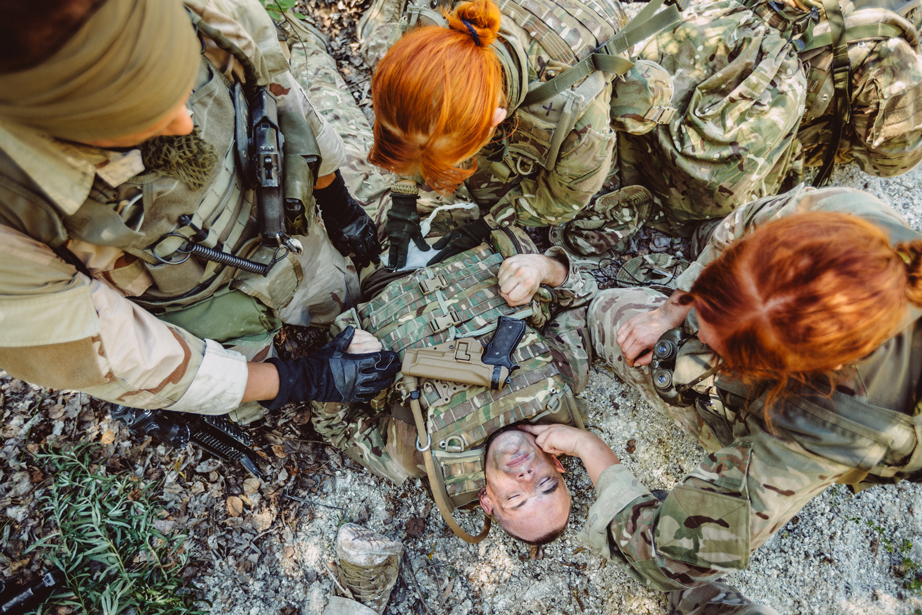
Introduction & Principles of first aid
Vital signs
Incident procedure
Treatment of an Unresponsive Casualty
Bleeding and Shock
Practical scenarios
Basic life support Heart attack and Chain of survival theory
Basic Life Support Non-Heart Attack (child/drowning)
Choking
Minor Injuries – soft tissue injury, fractures and dislocations
Serious injuries – including injuries to the head, spine and torso
Hypothermia / Hyperthermia
Insulation and shelter – with relevance to the working environment
Common medical problems – includes angina/conscious heart attack, asthma, diabetes, epilepsy (seizures),
faints, anaphylaxis and stroke
Conscious casualty positioning
Burns, scalds and electric shock
Poisons 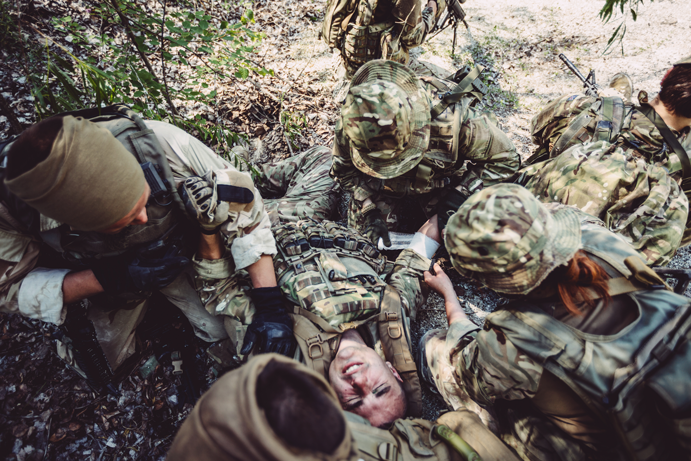
Eye injuries
First aid kits
Legislation and Administration – including record keeping
AED training - includes theory and safety issues, practical scenarios utilising a training unit, documentation and
maintenance
Manual handling considerations in first aid provision
Bites
Injuries to Dogs
This course has been developed in response to the need to have more people trained in a mass casualty situation.
To complete this qualification learners should expect to undertake 40 hours of learning, typically over 5 days.
Topics covered
Introduction and Principles of first aid
Gunshot wounds and realities of their medical management
How to rapidly evaluate injuries and how they affect your tactical treatment plan
The concept of “care under fire” and how it differs from a non-tactical medical situation
Choosing appropriate medical care for each treatment phase
Assessment and management of penetrating, blunt, and blast injuries
Assessment and management of massive haemorrhage
The safe and efficient use of improvised and commercially available tourniquets
Appropriate treatment of casualties with abdominal injuries or head injuries
Casualty hypothermia prevention
Techniques for moving casualties to a safer location
Triage of multiple casualties and setting up a Casualty Collection Point
Tactical casualty care concepts and their application
Airway management, airway positioning and airways
Appropriate treatment of casualties with ocular injuries
Burns
Fractures
This is a hands-on method of instruction specifically developed for the military and those individuals requiring special tactics and/or immediate trauma skills when battlefield, remote care, prolonged transport, or unique rescue and/or environmental conditions exist. This course is suited for those working in high risk environments.
To complete this qualification learners should expect to undertake 48 hours of learning, typically over 5 days.
How People Die in Combat 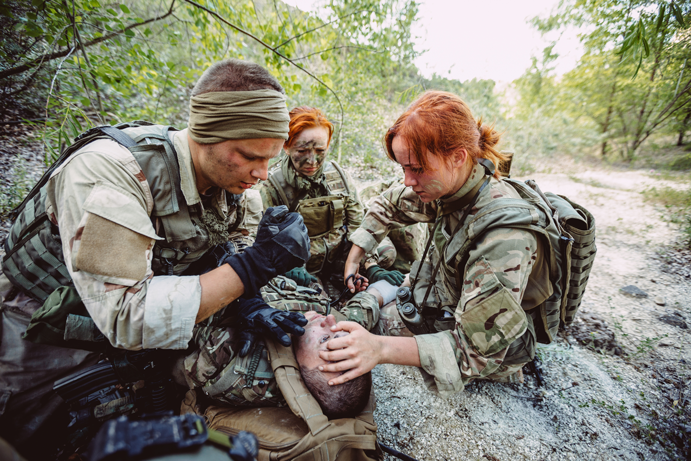
Medical Equipment and Gear Selection
Rapid Trauma Patient Assessment
Assessment and Re-Assessment Care
Pain Management
Immediate Action Plans
Management of Airway
Management of Blast Injuries & Burns
Management of Haemorrhage
Management of Tension Pneumothorax
Management of IV Fluid Administration & Shock
Management of Chest Wounds
SERT –Special Extraction Rescue Techniques
Medical Aspects of Specific Operations
Medical Threat Assessment & Medical Preplanning
Patient Evacuation
Patient Medical Information
Bandaging and Splinting in the Field
First Aid / CPR /AED Certification included
The U.S. Department of Defense’s Tactical Combat Casualty Care course, introduces evidence-based, life-saving techniques and strategies for providing the best trauma care on the battlefield. This course is the only TCCC course endorsed by the American College of Surgeons
Close quarter combat handgun for Close protection operatives 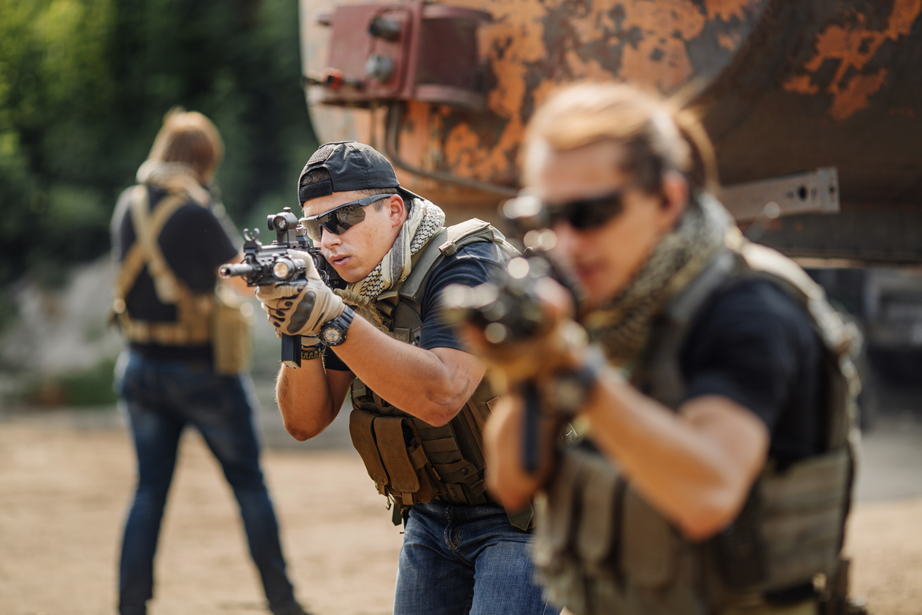
Close Quarter Combat Carbine & shotgun for Close protection operatives
High threat/ risk environment tactical firearms for security operatives
Active shooter
Tactical medic/Pre-hospital trauma life support
Pre deployment team training and evaluation
PSD/Hostile environment Close protection 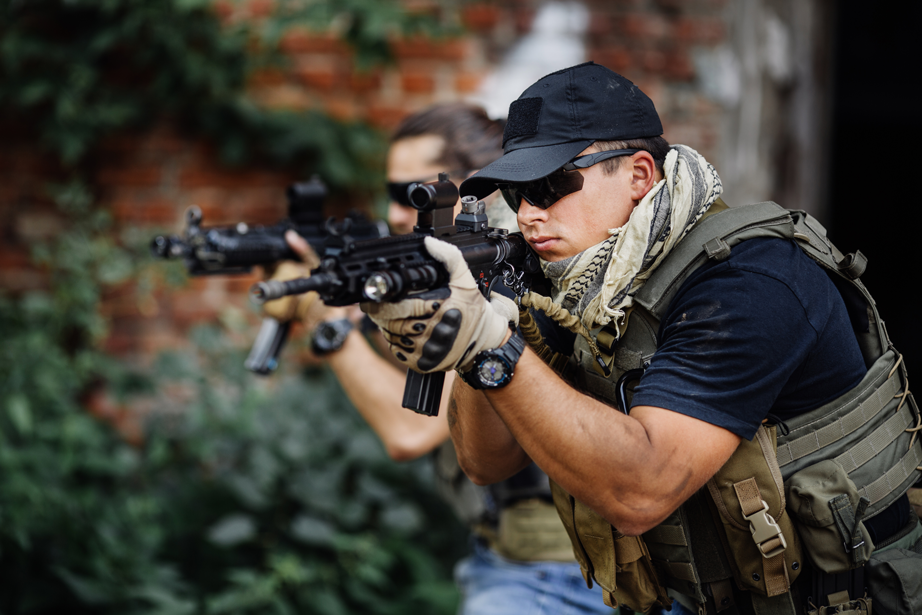
Further information on all courses is available on request. Specialist courses involving the use of firearms are held in the USA.
For those undertaking firearms training, a strict application process must be undertaken.